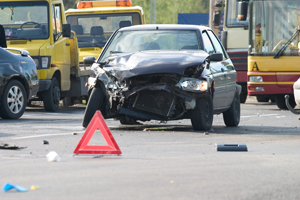The bay region’s highways are increasingly more crowded with motorists, and the dangers increase along with them. The more motorist crammed on the roads, the bigger the risk of an accident. More and more, cyclists and pedestrians are traveling the roads along with motorists and facing the same risks. Newly released data from the Metropolitan Transportation Commission showed the number of fatal automobile, motorcycle, bicycle and pedestrian crashes in the Bay Area jumped 43% from 2010 to 2016.
Researchers usually point to two major factors as a cause for this uptick. More drivers and longer commutes. The sharp rise in population and the increasingly long and mind-numbing commutes account for only a portion of the increase. There was a total of 455 fatal crashes in the area in 2016. Compare this statistic with 318 in 2010. Five out of the six years showed increases in the death toll. This followed four previous years of decline. But 2016 was not the highest point. In 2003, there were 509 fatal crashes. The highest number in the 16-year span studied. Experts have some other theories for the rise including distracted driving and a slow-down in advancements in safety features like seatbelts, anti-lock brakes, and shatter-proof windshields.
Ultimately, the real problem is simply human error. Data analysts have pointed out three major factors that continually top the charts of accident causes: unsafe turns, DUI, and speeding. Unsafe driver behavior is the cause of most vehicle accidents on the bay area roads. It isn’t only the Bay Area, either. There has been a steady uptick in deadly car wrecks all across the United States since the Great Recession, which officially ended in 2009. Between 2010 and 2016, deadly accidents rose 33% in California.
 Personal Injury Lawyer Blog
Personal Injury Lawyer Blog


 Oliver Ortega, a Guatemalan immigrant, learned this lesson the hard way five years ago. Ortega sought out a personal injury lawyer to aid him in his legal battle with a former employer who he was planning to sue for a wage claim. That’s when Ortega met Jesus Lozano, and his troubles really began.
Oliver Ortega, a Guatemalan immigrant, learned this lesson the hard way five years ago. Ortega sought out a personal injury lawyer to aid him in his legal battle with a former employer who he was planning to sue for a wage claim. That’s when Ortega met Jesus Lozano, and his troubles really began.
 The doctor, endocrinologist Jeffrey J. Abrams, is now suspended from that clinic, but at the time of this writing, he still holds his state medical license and hasn’t been arrested.
The doctor, endocrinologist Jeffrey J. Abrams, is now suspended from that clinic, but at the time of this writing, he still holds his state medical license and hasn’t been arrested. The trouble started in October of 2013 when Ms. Trubo was first admitted to the elder care facility. The staff was made aware at that time of the patients need to be assisted to and from the bathroom. In an instance prior to the fall, the nursing home neglect lawsuit cites she was escorted to the bathroom, only to be left for over 20 minutes before being escorted back. When she brought the matter to the attention of authority, she was told to use the bathroom, i.e. defecate and urinate, in her bed and wait to be cleaned up. Administration was involved at that point and Ms. Rosa’s family was assured the behavior was unacceptable and would not happen again.
The trouble started in October of 2013 when Ms. Trubo was first admitted to the elder care facility. The staff was made aware at that time of the patients need to be assisted to and from the bathroom. In an instance prior to the fall, the nursing home neglect lawsuit cites she was escorted to the bathroom, only to be left for over 20 minutes before being escorted back. When she brought the matter to the attention of authority, she was told to use the bathroom, i.e. defecate and urinate, in her bed and wait to be cleaned up. Administration was involved at that point and Ms. Rosa’s family was assured the behavior was unacceptable and would not happen again.